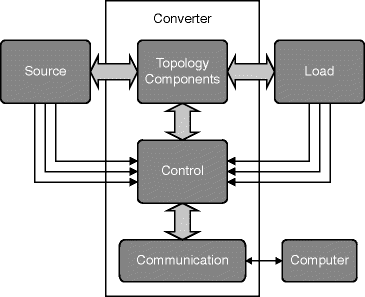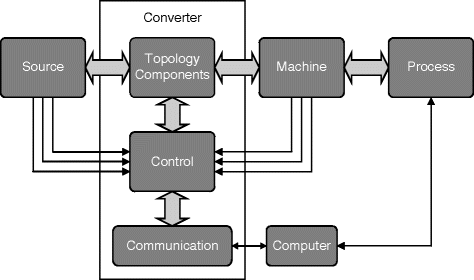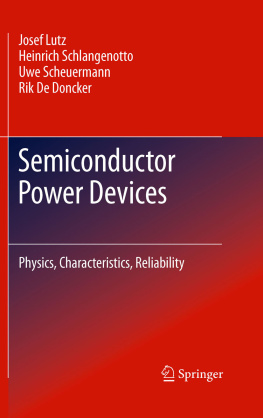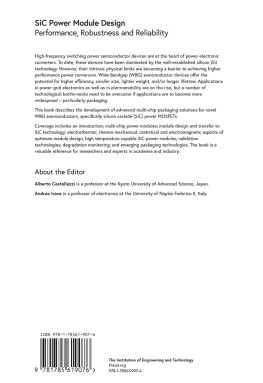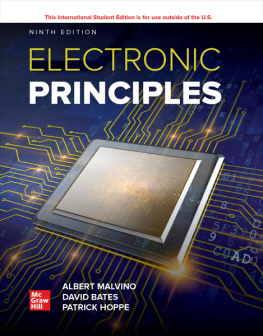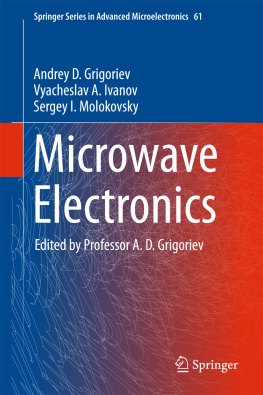Josef Lutz , Heinrich Schlangenotto , Uwe Scheuermann and Rik De Doncker Semiconductor Power Devices Physics, Characteristics, Reliability 10.1007/978-3-642-11125-9_1 Springer-Verlag Berlin Heidelberg 2010
1. Power Semiconductor Devices Key Components for Efficient Electrical Energy Conversion Systems
Abstract
In a competitive market, technical systems rely on automation and process control to improve their productivity. Initially, these productivity gains were focused on attaining higher production volumes or less (human) labor-intensive processes to save costs. Today, attention is paid toward energy efficiency because of a global awareness of climate change and, above all, questions related to increasing energy prices, as well as security of energy and increasing urbanization. Consequently, it is expected that the trend toward more electrical systems will continue and accelerate over the next decades. As a result, the need to efficiently process electrical energy will dramatically increase.
1.1 Systems, Power Converters, and Power Semiconductor Devices
In a competitive market, technical systems rely on automation and process control to improve their productivity. Initially, these productivity gains were focused on attaining higher production volumes or less (human) labor-intensive processes to save costs. Today, attention is paid toward energy efficiency because of a global awareness of climate change and, above all, questions related to increasing energy prices, as well as security of energy and increasing urbanization. Consequently, it is expected that the trend toward more electrical systems will continue and accelerate over the next decades. As a result, the need to efficiently process electrical energy will dramatically increase.
Devices that are capable of converting electrical energy from one form into another, i.e. transforming electrical energy, have been a major breakthrough technology since the beginning of electrical power systems and are considered key enabling technologies. For example, without transformers, large-scale power generation, transmission, and distribution of electrical power would not have been possible. Interestingly, very few people today are aware that without this invention, initially called secondary generator [], we would not have been able to create such an efficient, safe, and (locally) environmentally clean power source. Of course, as transformers, or generally speaking electromagnetic devices, can only transform voltage or control reactances, their use in automation systems remained limited. At the beginning of electrification, frequency and phase control could only be realized using electromechanical conversion devices (i.e. motors, generators). However, these machines were bulky, required maintenance, had high losses, and remained expensive. Furthermore, these electromechanical devices had rather low control bandwidth. Therefore, they operated mostly at fixed set points. Today, most automation and process control systems require more flexible energy conversion means to vary dynamically voltage or to regulate current, frequency, phase angle, etc.
At present, power electronics is the most advanced electrical energy conversion technology that attains both high flexibility and efficiency. As an engineering field, power electronics came into existence about 50 years ago, with the development and the market introduction of the so-called silicon controlled rectifier, known today as the thyristor [].
Simply stated, a power electronics system is an efficient energy conversion means using power semiconductor devices . A power electronics system can be illustrated with the block diagram shown in Fig..
Fig. 1.1
Power electronic systems convert and control electrical energy in an efficient manner between a source and a load. Sensor interfaces to the source and load, as well as information and communication links, are often integrated
A special class of power electronic system s are electrical drives. A block diagram of an electrical drive is illustrated in Fig. ]. In the near future, despite the increased use of power converters in photovoltaic systems and computer power supplies, it is expected that this dominance of drives will remain. Most experts predict that the existing industrial markets for drives will continue to grow and will be complemented by newly developed markets, such as wind turbines, more electric ships and aircrafts, and electric mobility, i.e. trains, trams, trolley busses, automobiles, scooters, and bikes.
Fig. 1.2
Highly dynamic electrical drives systems comprise power electronic converters and electrical machines or actuators with dedicated control to convert electrical energy into mechanical motion
1.1.1 Basic Principles of Power Converters
Looking into the generic power electronic converter block diagram of Fig. , more details can be revealed when considering the operating principles and the topology of a modern power electronic converter. Basically, to make power electronic converters work, three types of components are needed:
Active components, i.e. the power semiconductor components that turn on and off the power flow within the converter. The devices are either in the off-state (forward or reverse blocking) or in the on-state (conducting).
Passive components, i.e. transformers, inductors, and capacitors, which temporarily store energy within the converter system. Based on the operating frequency, voltage, cooling method, and level of integration, different magnetic, dielectric and insulation materials are used. For a given power rating of the converter, higher operating (switching) frequencies enable smaller passive components .
Control unit, i.e. analog and digital electronics, signal converters, processors, and sensors, to control the energy flow within the converter such that the internal variables (voltage, current) follow computed reference signals that guarantee proper behavior of the converter according to the external commands (that are obtained via a digital communication link). Today, most control unit s also provide status and system level diagnostics.
As power electronic converters ought to convert electrical energy efficiently (efficiencies above 95%), linear operation of power devices is no option. Rather, the devices are operated in a switching mode. Hence, in the power supply area, to make this distinction, power converters are called switched-mode power supplies. The basic idea behind all power converters to control and convert the electrical energy flowing through the converter is to break down this continuous flow of energy into small packets of energy, process these packets, and deliver the energy in another, but again a continuous, format at the output. Hence, power converters are true power processors! In doing so, all converter topologies must respect fundamental circuit theory principles. Most importantly, the principle that electrical energy can only be exchanged efficiently via a switching network when energy is exchanged between dual components, i.e. energy stored in capacitors or voltage sources, should be transferred to inductors or current sources.
